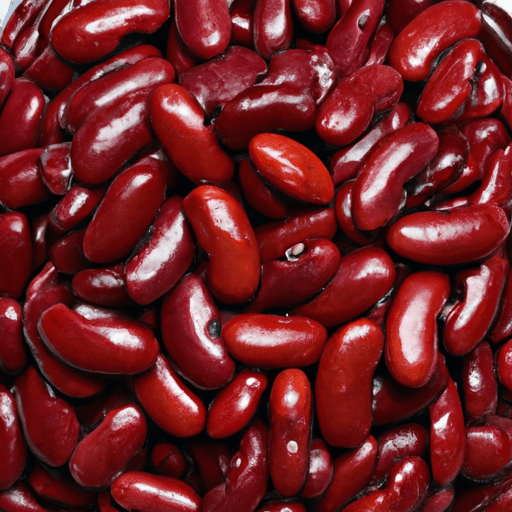Canned Red Beans: A Versatile and Nutritious Pantry Staple
Canned red beans are a true kitchen superhero. These little red wonders not only offer a delicious taste and a soft, creamy texture, but they also provide a world of culinary possibilities. Whether you are a busy professional, a student, or someone who simply wants to enjoy a home-cooked meal without spending hours in the kitchen, canned red beans are your secret weapon.
Taste and Texture
Canned red beans have a mild, slightly nutty flavor that pairs perfectly with a wide range of ingredients. They possess a tender and creamy texture that holds up well during cooking, making them an ideal choice for various recipes. Whether you’re preparing soups, stews, salads, or dips, these beans add a delightful earthiness that elevates any dish.
Common Uses in Cooking
The versatility of canned red beans is truly remarkable. They are commonly used in many traditional recipes from around the world, including Latin American, Caribbean, and Creole cuisines. Here are a few popular ways to incorporate canned red beans into your cooking:
1. Classic Red Beans and Rice
Red beans and rice is a beloved dish that originated in Louisiana and has become a staple in many households. Simply sauté onions, bell peppers, and celery, then add the canned red beans along with seasoning, such as garlic, thyme, and bay leaves. Serve this flavorful mixture over a bed of rice for a hearty and satisfying meal.
2. Vegan Burgers and Patties
Canned red beans can be transformed into delicious vegan burgers or patties. By mashing the beans and combining them with breadcrumbs, onions, and spices, you can create a protein-packed base that is both nutritious and scrumptious. Pan-fry or bake the patties for a healthy alternative that is sure to impress.
3. Bean Salads and Dips
Red beans add a wonderful touch to salads and dips. Combine them with fresh vegetables, herbs, and a zesty dressing for a quick and refreshing salad. Alternatively, blend the beans with garlic, lemon juice, and olive oil to create a smooth and creamy dip, perfect for snacking or as a party appetizer.
Nutritional Value
Canned red beans are not only delicious; they also pack a nutritional punch. These legumes are a fantastic source of plant-based protein, dietary fiber, and essential minerals. They are low in fat and cholesterol-free, making them an excellent addition to a balanced diet.
A one-cup serving of canned red beans provides approximately:
- Protein: 15 grams
- Fiber: 15 grams
- Iron: 4 milligrams
- Folate: 230 micrograms
Incorporating canned red beans into your meals can help promote digestion, regulate blood sugar levels, and support heart health. They are an excellent choice for vegetarians, vegans, and anyone looking to increase their plant-based protein intake.
Interesting Facts and History
Did you know that canned red beans have an intriguing history? In traditional southern US cuisine, red beans and rice became a popular dish due to its affordability and simplicity. The tradition of cooking red beans and rice on Mondays, known as “Red Beans Monday,” dates back to the time when Mondays were designated as laundry days. Since doing laundry required a lot of time and attention, households would cook a dish that required minimal supervision, like red beans and rice.
Today, canned red beans continue to be a pantry staple around the world, cherished for their convenience, versatility, and rich heritage. So the next time you’re looking to create a delicious, nutritious, and time-friendly meal at home, look no further than the humble can of red beans!
Now that you know the wonders of canned red beans, let your creativity flow and experiment with these delightful legumes. Their endless possibilities and health benefits are sure to make them a permanent addition to your pantry.
Enjoy the journey of culinary exploration with canned red beans!
Note: While canned red beans offer convenience, be sure to check the label for any added sodium or preservatives. Opt for low-sodium or no-salt-added varieties whenever possible.
Canned Red Beans
Origin: Red beans, also known as kidney beans, have their origins in Central and South America. They were cultivated by ancient civilizations such as the Aztecs and Incas, and were later introduced to Europe and other parts of the world by Spanish explorers.
Common Uses: Canned red beans are a versatile ingredient used in various cuisines around the world. They are often used in dishes such as chili, soups, stews, and salads. They are a key ingredient in famous dishes like red beans and rice, a traditional Creole and Cajun dish from the southern United States.
Nutritional Benefits: Canned red beans are a nutritious addition to a balanced diet. They are an excellent source of plant-based protein, dietary fiber, and several essential minerals including folate, iron, and potassium. They are also low in fat and sodium.
Unique Properties: Red beans get their name from their kidney-like shape and color. When cooked, their texture becomes smooth and creamy. Canned red beans are a convenient cooking option as they are pre-cooked, making them ready to use in recipes with little preparation time.
Historical Significance: Red beans have been a staple food in many cultures for centuries. In the southern United States, red beans and rice became a popular dish due to its affordability and satisfying nature. Traditionally, Mondays became “wash day,” and the long cooking process of red beans allowed housewives to focus on their laundry while the dish simmered on the stove.
Remember to always rinse canned red beans before using them to remove any excess sodium or preservatives.




Use the share button below if you liked it.
It makes me smile, when I see it.